Crater of Diamonds State Park, in Arkansas, is known for… well, diamonds. But the unique geology of the area also means that there are many uncommon minerals spread throughout the park. Diamonds are great, but they’re still vanishingly rare and you’re more likely to come away with something else unless you get lucky.
So, let’s take a look at the rocks and minerals found at Crater of Diamonds, so you have a better idea of what to expect when you take a trip.
1. Diamond
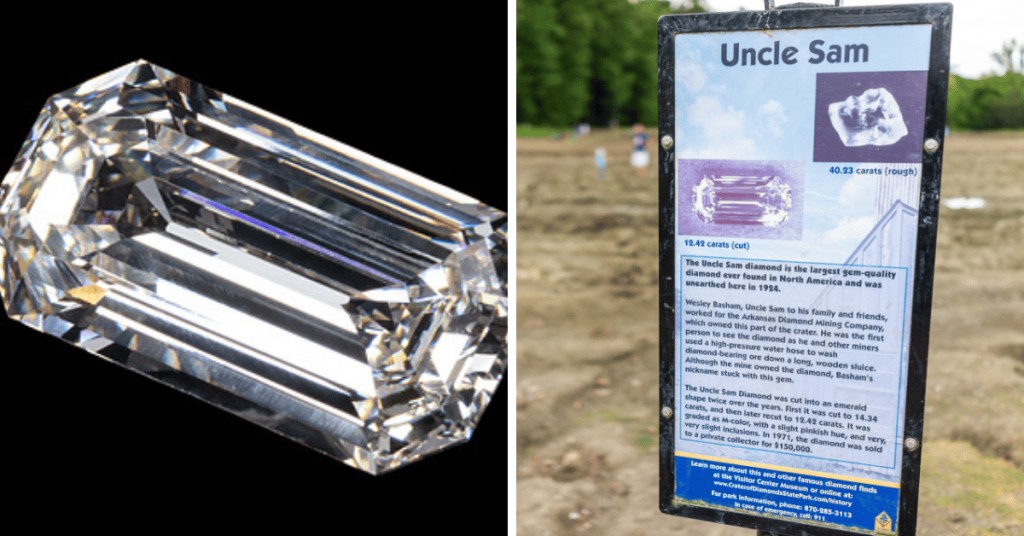
Of course, the namesake of the place is present in vanishingly small quantities. Diamonds are a form of carbon, highly compressed into a crystalline lattice. Gem-quality diamonds are very rare, and they can command high prices on the market. Diamonds aren’t just pretty gemstones, they have some qualities that make them seriously unique in the mineral world.
Among the most important is the fact that diamonds are the hardest mineral known. They’re the bench standard for 10.0 on the Moh’s scale. They’re just about the only thing that can cut themselves, and they’re invaluable to those who work with hard materials like stone. Synthetic diamonds have been created, and they’re still much cheaper than the natural sort.
The Crater of Diamonds is named for their appearance. There are plenty of minerals here, but this is what most people show up to dig for. The largest diamond in the US, the Uncle Sam, was found here in 1924. I wouldn’t expect to find a large one as a matter of course, but ti seems that someone unearths a diamond or two every few weeks here, and they’re certainly worth the hunt even if it ends up as only a collector’s item.
For those interested in further research on the diamonds here, the park actually keeps a database of the diamonds found. It looks like, on average, a couple of stones are found per day in the park. So the odds aren’t great, but they’re not nearly as slim as the majority of other locations bearing diamonds in the USA.
2. Barite
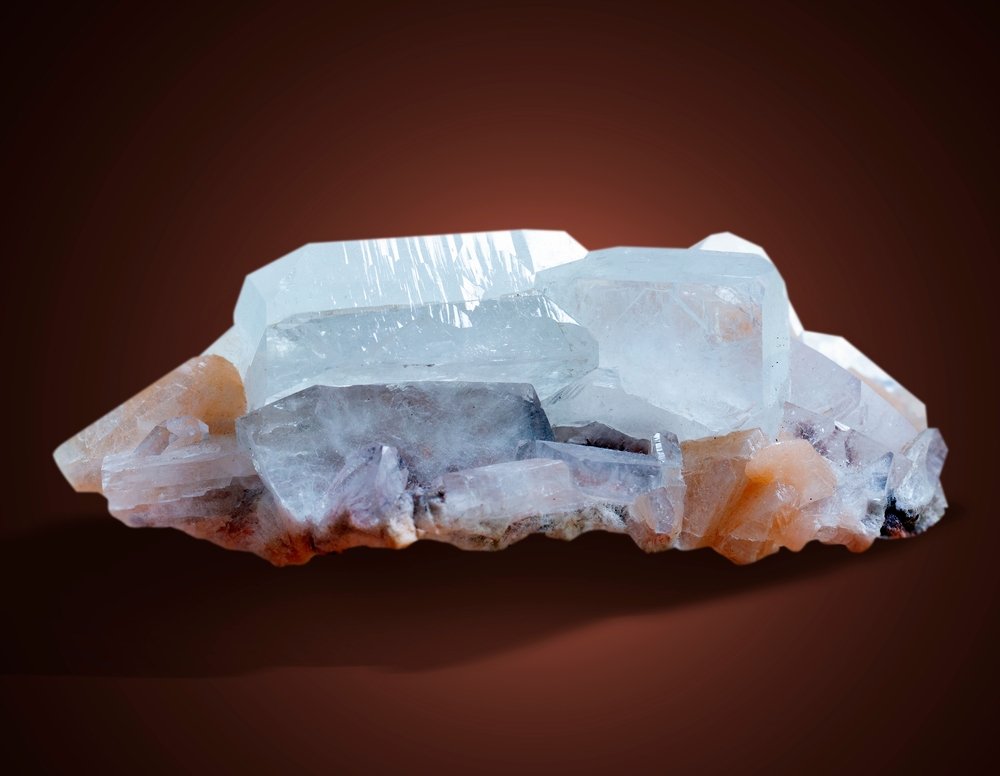
Barite is a strange, generally white, mineral that’s found in the park. It’s comprised of barium sulfate and is generally colorless. In other cases, it may take on a light hint of color, usually blue or pink. It occurs in a few different crystalline forms as well, making it a great item for collectors. Other than that it’s mainly of use to industry, although it’s very rarely cut as a gemstone.
In oil well drilling, barite is used to load down the drilling fluid. The high density of the mineral, combined with a careful screening process to remove most contaminants, helps to prevent blowouts, where oil is released in an uncontrolled manner. Barite is also used as filler in some other chemicals, including automotive paint where it can keep the surface smooth. Its density simply makes it a useful mineral, in addition to being a good-looking one.
Barite is often found in the Crater of Diamonds. Here it’s usually present as small blue or grey crystals arranged in a tabular fashion. It’s easy enough to recognize due to the high density of the material, weighing almost twice the amount of something like jasper. It may not be the prize of the park, but it’s cool stuff.
3. Chrome Diopside
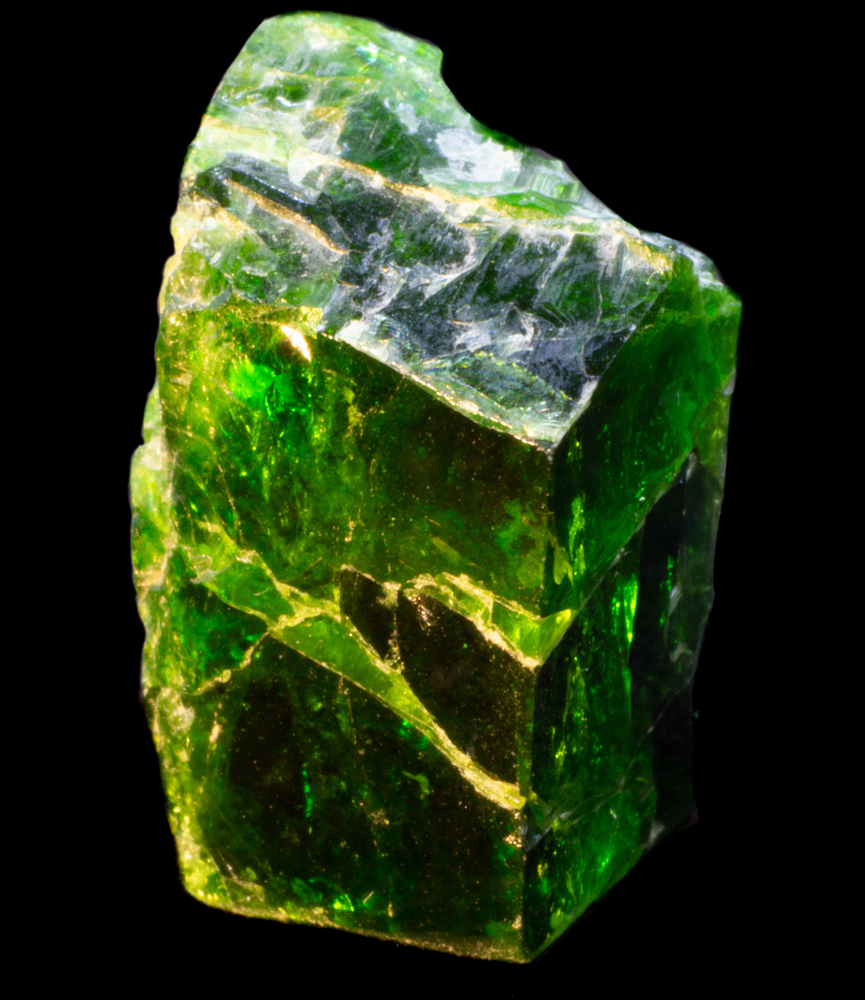
Chrome diopside is a specific form of the mineral diopside, itself a magnesium calcium silicate. The chrome has the effect of coloring the normally transparent diopside green, ranging from lime green to every bit as deep as an emerald. It’s fairly common as a gemstone since it’s the most affordable of the deep green gems.
Chrome diopside is often found in xenoliths. Generally, those also contain a lot of peridots. These are stones that have been swallowed by the surrounding stone, showing a marked difference from the bedrock in an area. It’s also found near kimberlite pipes, which are the most well-known source of diamonds in the earth’s crust and certainly present in the park.
The Chrome Diopside found in Crater of Diamonds isn’t the same deep green that’s seen in most gemstones cut from the material. Instead, it shows up as irregular, lime-green crystals in the same area where diamonds are dug for. It’s an interesting find, especially considering the scarcity of green gemstones available.
4. Amethyst
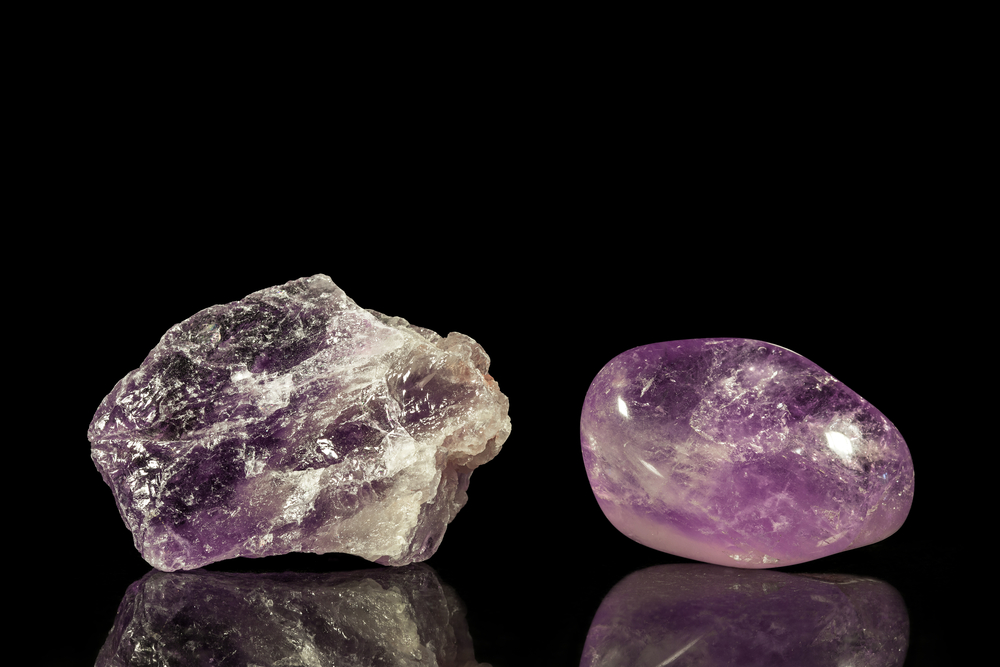
Amethyst is a quartz variety that’s colored purple. It appears that the coloration comes from iron trapped in the crystalline lattice of the quartz itself, rather than being dispersed through the stone like an inclusion. It’s among the most common semi-precious gemstones, having lost much of its original value when large deposits were discovered in America and Brazil.
Amethyst is often found as clusters, points, or geodes. It generally occurs alongside colorless quartz, and often crystals may fade from white to purple as they grow. This shows up most markedly in varieties like chevron amethyst, which has tell-tale white chevrons cutting through the purple. The deeper the color, the more the amethyst is valued in most cases.
While not a common find at Crater of Diamonds, there have been quite a few nice samples dug up here. Unlike the majority of American amethyst, it’s often a dark purple when found in this location. Chunks of it drug from the earth in the park are every bit as beautiful as the Brazilian material and have a higher value if you can prove the provenance.
Clear quartz is also found frequently in Crater of Diamonds, and across Arkansas in general, but it’s not quite as fascinating in my opinion.
5. Agate
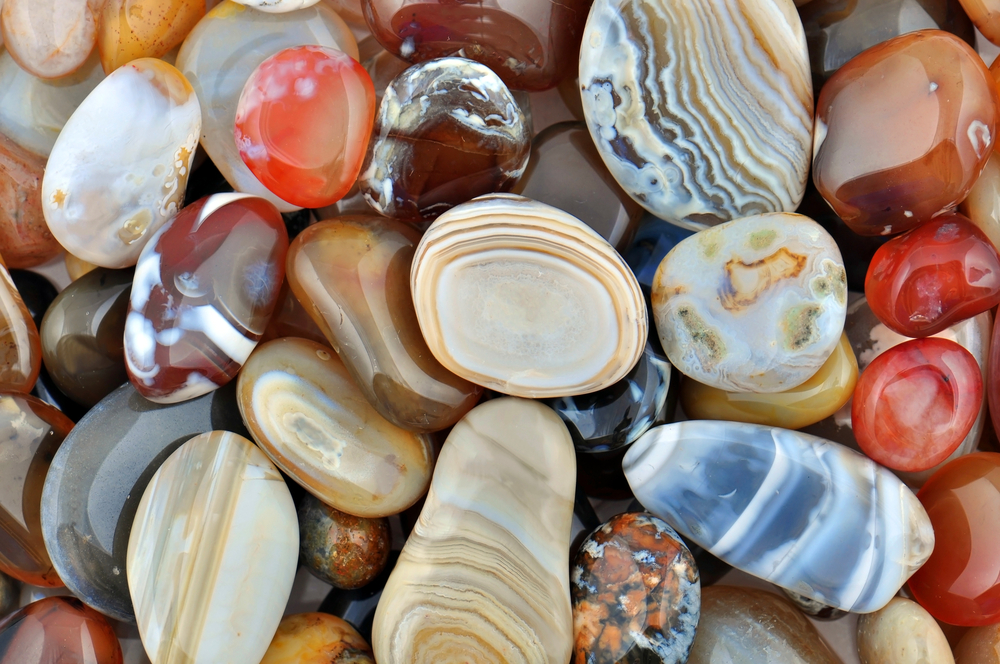
Agate is a cryptocrystalline form of silica, and a common one to boot. In many places across the United States you can step into a riverbed, dig around a bit, and start pulling out nodules in short order. You just need to know what to look for, which is an irregularity in shape and a waxy texture. They’re among my favorite stones, simply for the sheer variety that characterizes them.
Agates were originally only banded chalcedony, but the name has expanded. These days you can expect to see things like plumes, tubes, and moss in clear chalcedony labeled as agate. In general, to be considered agate a piece of chalcedony must be transparent and have some sort of color banding or inclusions. The sheer variety of agates is hard to comprehend, but most of the inclusions are just metal salts that crystallized as the silica gel formed into chalcedony.
The agate from Crater of Diamonds is a bit nondescript for the most part, often white and grey chalcedony with some banding. One nice thing about them is that they often have a druzy coating. This is a secondary formation on top of the chalcedony in the form of tiny quartz crystals. They may not be an agate collector’s dream stone, but they’re pretty cool if you can get your hands on one.
6. Opal
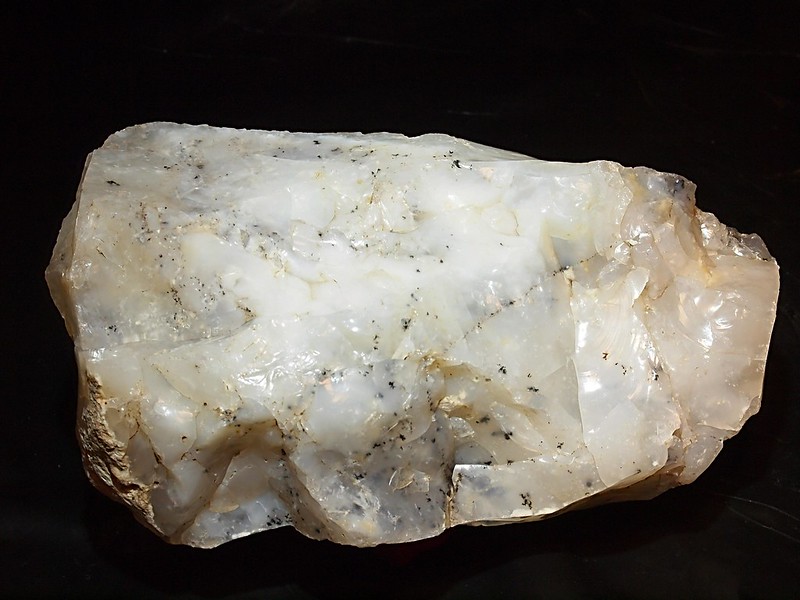
Silica makes up a huge portion of the Earth’s crust, thus it also makes up many of the minerals that are regularly found. Opal is an amorphous form of silica. Strictly speaking, it’s a mineraloid rather than a mineral. Opal is more similar to a glass than to the ordered crystal structure of most other stones.
Opal comes in two varieties: common and precious. Common opal is a simple glass-like material, often colored by local contaminants. Precious opal has a different structure in the form of tiny spheres of silica pressed together, causing light to break as it passes through them. Precious opal is only found in a few places, the vast majority of the material is common opal.
It’s common opal that’s present here, often in the form of clear-ish nodules. While often quite small, they’re an interesting mineral in and of themselves and worth keeping an eye out for. You can recognize them by the presence of conchoidal fractures and a glassy exterior texture. They’re actually quite rare, which makes them an excellent oddity for collectors.
7. Magnetite

Magnetite is an iron-bearing mineral that’s most often used in steel production. As the strongest naturally magnetic mineral, its been used since antiquity in various ways. The lodestones talked about for navigation, for instance, were pieces of magnetite. While fairly common as a mineral great specimens are still a bit rare.
The most sought-after specimens are octahedral crystals with glossy black color. In the right conditions, these can form almost perfectly, creating an oddity that’s hard to pass up. Magnetite isn’t just magnetic, it’s also extremely dense which makes it easy to identify when found. Oddly enough, this octahedral shape is the same shape that diamonds form into.
As long as you don’t confuse it for a dark diamond on your initial look, magnetite crystals are awesome. Those found in Crater of Diamonds are usually well-formed, with a few nearly perfect specimens being found as well. The neat thing is that you can put a magnet to use to help you find them, taking advantage of the stone’s intrinsic properties.
8. Calcite
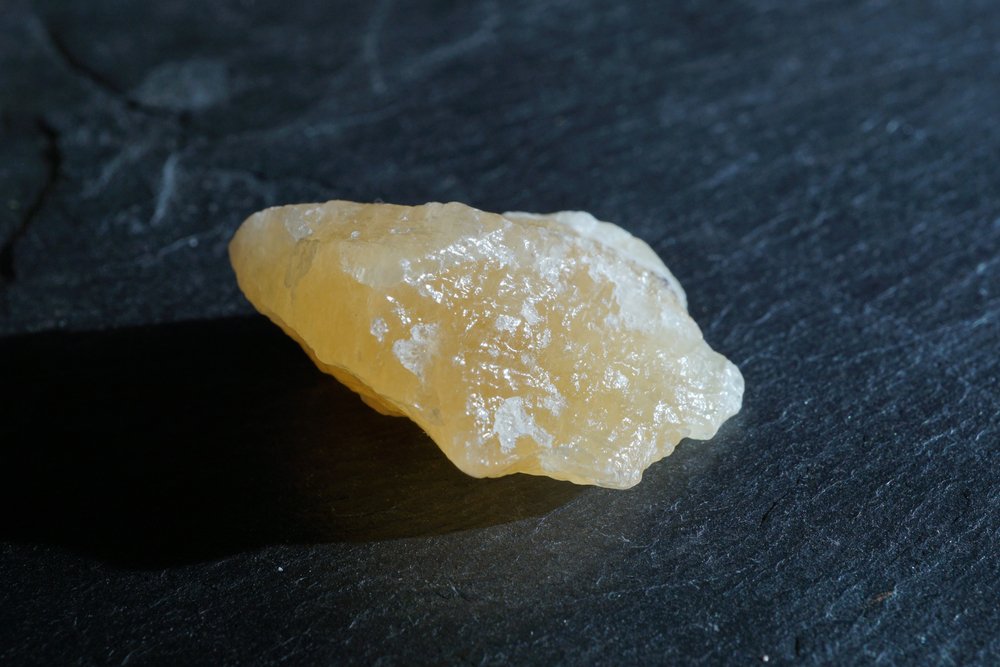
Calcite is among the most common minerals on the planet, a crystallized form of calcium carbonate. Calcite is often found in different colors and crystal formations, ranging from irregular crystals to dog tooth spars depending on the location. It can precipitate directly out of the water as well, often stalactites and stalagmites are formed from this mineral in short (by geological timing) order.
Calcite is just one of the forms that calcium carbonate takes. Others, such as aragonite, aren’t quite as common. Calcite itself varies in color depending on the purity of the mineral and it’s a favored material by carvers due to its softness. While soft, calcite is often well-formed, making it ideal for those who want to undertake the art of gem carving for the first time.
The samples from Crater of Diamonds tend to be small-ish crystals that are cloudy white. While not the most impressive sample of the mineral, they stand as a testament to just how many different minerals lie in this area. And you never know what you’ll find here, colored crystals or unique forms are possible as well.
9. Jasper
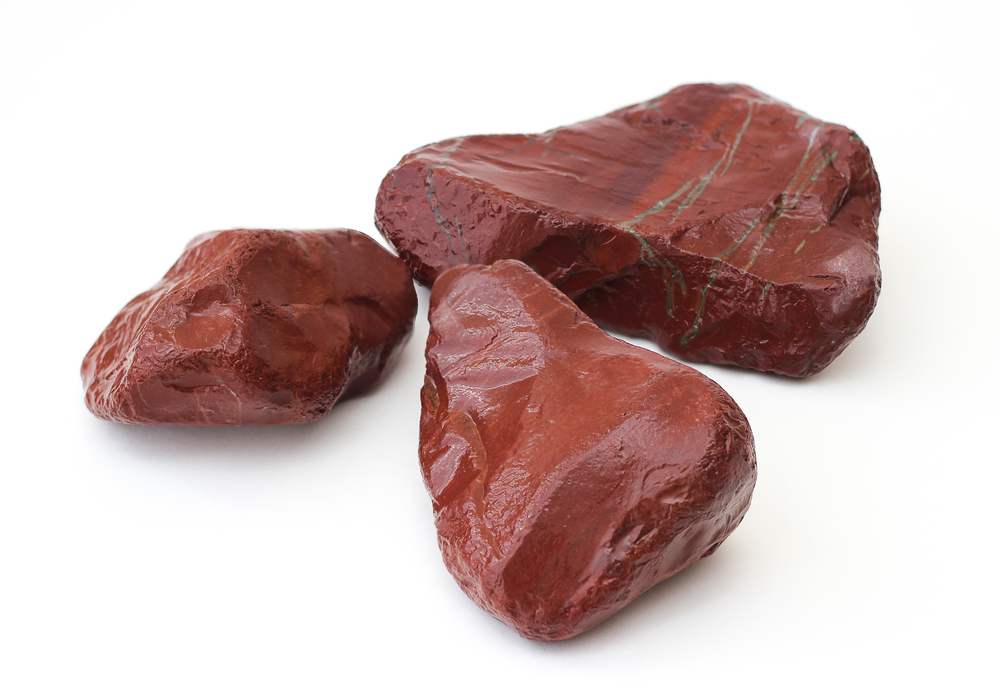
Jasper is actually a very frequent find in this area. This is probably due to the local coloration being different from the rest of the stones and the fact that it’s usually found in larger chunks. Jasper is actually an opaque form of chalcedony, mainly separated from agate by the fact that you can’t see through it.
Across the world, jaspers appear in a wide range of colors and patterns. They’re among my favorites and cutting into a nodule you’ll never be quite sure of what you’ve got. Samples are often tumbled to display their colors and patterns better, and it’s a basic stone for those who are into hardstone carving. Jasper, in general, cuts well and takes a fantastic polish.
The chunks found at Crater of Diamonds tend towards the usual red and yellow colors, rather than being anything exotic. The good news is that it’s hard not to find some during your visit, it sticks out among the various other minerals and rocks that are in the park. While not quite as valuable as diamonds, it’s hard not to walk away with some when you visit. So keep an eye out for the tell-tale reds and oranges of the local varieties.

